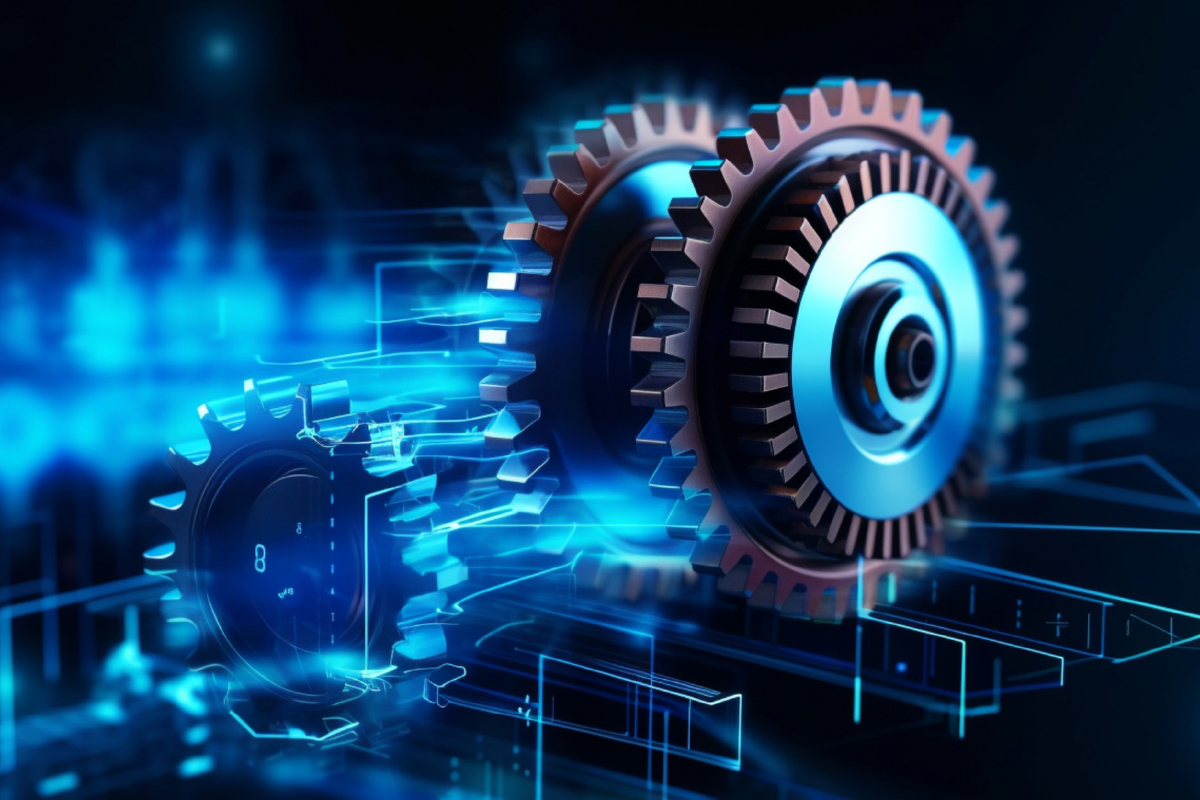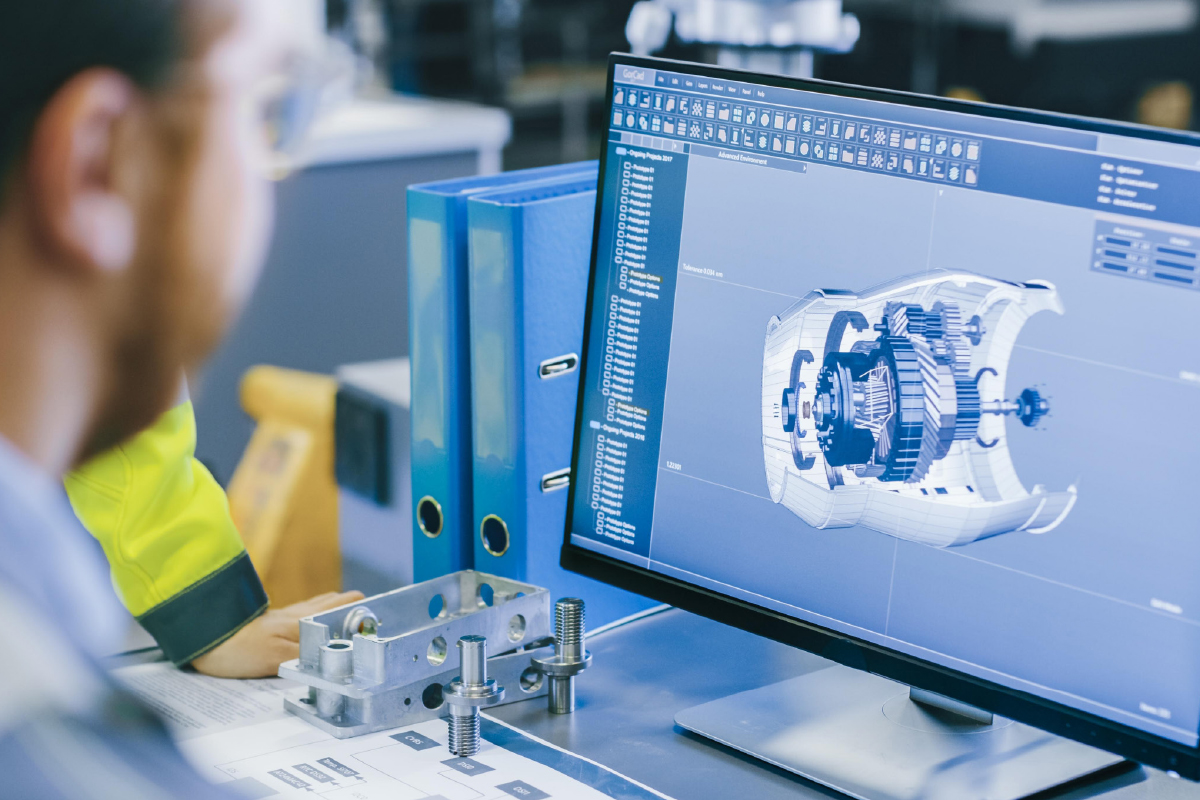
By: Nishant Kashyap
Digital twin is a virtual, data-driven replica of a physical object or system. In the context of gear manufacturing, a digital twin encompasses the gear designs, manufacturing equipment, and the entire production process.
This digital representation created using data from sensors, IoT devices, and other sources closely mirrors the real-world counterparts providing an accurate and dynamic reflection of the physical gear manufacturing environment.
A digital twin is not a static model but a dynamic entity that continuously updates in real time, allowing for precise monitoring, analysis, simulation, and optimization of the physical gear manufacturing processes.
It serves as a bridge between the physical and digital realms, facilitating better control, decision-making, and problem-solving.
Digital twins have found numerous applications within the gear manufacturing industry. Here’s an in-depth look at how digital twins are being used in gear manufacturing processes:
Virtual Gear Design and Prototyping: Digital twins are employed to create virtual models of gear designs. These 3D representations allow manufacturers to simulate and evaluate the performance of different gear designs before they are physically produced. Virtual prototyping reduces the need for physical prototypes, saving time, and resources.
Real-time Monitoring and Control: Sensors attached to machinery collect data on factors such as temperature, vibration, and process parameters.
Thus, digital twins continuously update to reflect the state of equipment enabling operators to monitor and control production processes effectively.
Process Optimization: Digital twins are used to simulate and analyze the entire gear manufacturing process. This includes gear cutting, heat treatment, surface finishing, and more.
Simulation helps identify bottlenecks and inefficiencies, leading to process improvements, reduced waste, and cost savings.
Quality Control: Digital twins compare the characteristics of manufactured gears with the desired specifications.
Deviations from the specifications are immediately identified, allowing for rapid corrective actions and reduced waste.
Predictive Maintenance: By analysing equipment performance data, they can anticipate issues such as wear and tear. This proactive approach reduces unplanned downtime, increases the lifespan of equipment, and lowers maintenance costs.
Supply Chain Optimization: Digital twins monitor the availability of raw materials and components in real time.
This visibility ensures that there are no production delays due to material shortages, leading to better inventory management.
Remote Collaboration and Support: Experts can access the digital twin remotely, providing guidance and support to on-site personnel.
They can troubleshoot issues and share their expertise, regardless of their physical location.
This capability enhances problem-solving and knowledge sharing within the organisation.
Data Analytics and Machine Learning: The data generated by digital twins is a valuable resource for gear manufacturers. They can apply data analytics and machine learning to derive insights from this data.
Machine learning algorithms can be used to optimize processes, predict maintenance needs, and improve product quality further.
Digital twin technology is not only enhancing the efficiency and quality of gear manufacturing but also driving innovation in the industry.
The ability to simulate, analyze, and optimize processes in real time is invaluable, making gear manufacturing more competitive, adaptive, and capable of meeting the demands of various industries, from automotive to aerospace.
Implementing digital twins in gear manufacturing holds great promise but is not without its set of potential challenges and limitations.
Firstly, the complexity and cost involved in creating and maintaining digital twins can be a hurdle, particularly for smaller manufacturers.
The investment in sensors, IoT infrastructure, and data management systems can be significant.
Managing the massive amounts of data generated by digital twins is another challenge, requiring the right infrastructure and tools for handling and analysis.
Furthermore, interoperability issues may arise when integrating digital twin technology with existing manufacturing systems, emphasising the importance of ensuring seamless compatibility among equipment and software components.
Another challenge involves expertise and workforce training. Manufacturers need personnel who are well-versed in digital twin technology to effectively manage and utilise the systems.
This often necessitates additional training or hiring of specialised talent.
Scalability, especially for larger manufacturing facilities or complex production processes, can present logistical challenges.
Additionally, the reliability and accuracy of the data collected are paramount. Inaccurate data can lead to incorrect decisions and process inefficiencies, necessitating rigorous data validation and quality control.
Regarding data security and privacy, gear manufacturing often involves sensitive intellectual property and proprietary information.
Protecting this data against cyber threats is crucial, and robust measures such as encryption, access controls, and security audits must be in place.
Clarity on data ownership and rights within the organisation and with third-party partners is essential to maintain control over the data. Compliance with data privacy regulations and industry standards is vital.
In terms of technology integration, ensuring scalable infrastructure is important to accommodate evolving manufacturing needs.
Integration with existing manufacturing systems and legacy equipment is critical, as is standardising data formats and communication protocols to simplify the process.
Careful vendor selection is advised, with a focus on reputation, support, and compatibility.
Finally, equipping the organisation with the necessary data management and analytics tools is crucial to make the most of the data collected by digital twins.
Addressing these challenges and considerations allows manufacturers to reap the benefits of digital twin technology in gear manufacturing while ensuring data security, privacy, and smooth technology integration.
The field of digital twin technology is continually evolving, with several emerging trends and technologies that hold the potential to significantly impact the gear manufacturing industry.
Advanced simulation and modelling techniques are becoming more accurate, enabling precise predictions and reduced prototyping costs.
Artificial intelligence (AI) and machine learning are increasingly being integrated into digital twins, offering predictive analytics, anomaly detection, and autonomous decision-making capabilities that can enhance gear manufacturing’s quality control and process optimization.
Edge and fog computing reduce latency and enable real-time decision-making, crucial for precision manufacturing.
Generative design algorithms, backed by AI, rapidly generate and optimize gear designs, cutting design time and costs.
Digital thread integration ensures data continuity and traceability, benefiting quality control and compliance.
The rapid increase of IoT devices and 5G networks provide faster data transmission and lower latency, further enhancing digital twins’ capabilities in gear manufacturing.
Lastly, blockchain technology is explored for securing and verifying data within digital twins, ensuring data integrity and enhancing security.
These trends and technologies collectively empower gear manufacturers to achieve advanced design, real-time monitoring, cost savings, and improved supply chain efficiency, positioning them as competitive leaders in the industry.
